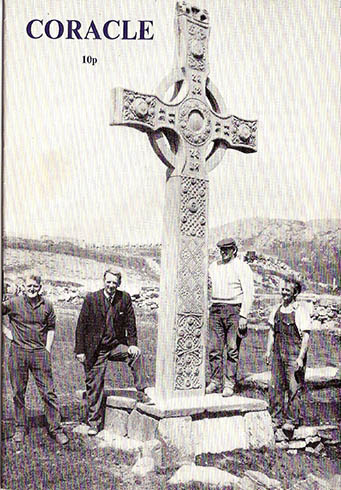Concrete and non-concrete
Concrete and non-concrete: an ethnographic study of the contemporary value and authenticity of historic replicas
This project, funded by the Royal Society of Edinburgh and Historic Environment Scotland, aims to advance recent debates about the relationship between original historic monuments and replicas, as well as inform the use of replicas at heritage sites. Nearing its 50th anniversary, our study centres on the St John’s Cross erected in front of Iona Abbey in 1970, arguably the most iconic of Iona’s monuments.
Applying short-term ethnographic techniques, we will focus on people’s perceptions of Iona’s medieval heritage, including the Abbey, the crosses and the St John’s Cross replica. We are particularly interested in what these mean to people and what kinds of value they attach to them. For further information, including how to get involved, see our Participants Information Sheet and Concrete and non-concrete project poster July 2017.
Until recently, value and authenticity have been seen as intrinsic dimensions of historic objects and monuments within authorized museum and heritage discourses. In contrast, replicas and reconstructions have a chequered history (e.g. Foster and Curtis 2016), ranging from heated debates about their authenticity to benign neglect. Recent research has focused on the historical, ethical and practical issues associated with both physical and digital replicas. It has been shown that replicas acquire their own cultural biographies, while simultaneously contributing to the social lives of their original counterparts (Foster et al. 2014).
It has also been argued that authenticity and value can ‘migrate’ from originals to replicas (Latour and Lowe 2011), while others suggest that replicas acquire distinct forms of authenticity and value (Cameron 2007; Holtorf 2005). Nevertheless, there have been very few qualitative social studies examining how replicas of historic objects and monuments ‘work’ (though see Jeffrey et al. 2015; Jones et al. forthcoming). How do they mediate people’s experience of heritage? When and how do they acquire authenticity and value? What kinds of social and material relations do they sustain? Given their widespread use in heritage and museum contexts, there is a pressing need for qualitative research that can increase our understanding of these areas.
PI: Dr Sally Foster (contact for further information)
CI: Professor Siân Jones
Partner: Dr Stuart Jeffrey, School of Simulation and Visualisation, Glasgow School of Art

The 1971 cover of Coracle shows Alastair MacKenzie (second from right) and three of the employees of Murdoch MacKenzie Ltd who assisted with the erection of the St John's Cross replica in 1970.
Image reproduced by kind permission of the photographer Murdoch MacKenzie and Iona Community.

